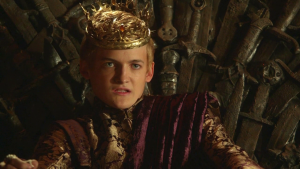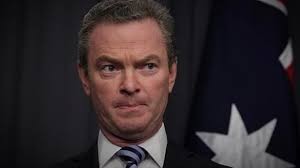Adrian Miles seems to be one of the most provocative and intriguing people you will ever meet, especially while at uni. He was a guest lecturer in today’s lectorial and he told us all, all of us with our young, absorbent, spongy brains, how stories are something that are uniquely human, and how we constantly search for the meaning of things, as opposed to seeing what things actually are.
He told us many things. How we’ve been taught to believe that thinking is privileged, so if you think of something you’ve basically done it already. That we think we’re on top of the food chain, when that is simply preposterous. How we have this notion of “I think, therefore I am”, so we separate our brains from our bodies, when in reality they are in concert with each other, they are one and the same. All this and more he told us, and it was the most provocative talk you will ever hear, because you sit there and listen and you think ‘but that’s not right’, and then you sit there some more and realise, ‘but wait, it is right’. And then you do something amazing, that was the whole point of him talking in front of you in the first place, you start to think about it in your own way and start to contribute unique thoughts to the conversation as you realise that the world is not the size of the fish pond it was back in high school. It’s an ocean of possibility (as you can see, still working on the originality part).
After Adrian spoke to us about meaning and how it’s all in our heads, Liam Ward spoke to us about editing. This was very interesting to me, as I find I struggle to consistently edit with meaning and purpose. Liam told us about how the human brain creates meaning when there’s a sudden cut from one shot to another, using that one shot from “2001: A Space Odyssey” (Kubrick, 1968) that everyone uses (but is still a brilliant example):
Liam started his talk by saying that editing is “deliberately breaking and fragmenting things”, allowing us to fill the gaps with meaning and ask why these gaps exist in the first place.
Liam showed us the Kuleshov effect:
This emphasises that we discern the meaning of one image from the images surrounding it, not just the image itself. Liam emphasised this point by showing us all a photo of Joffrey Baratheon from the “Game of Thrones” (Benioff and Weiss, 2011-):
And then placing it next to photos of Christopher Pine:
And then this photo next to the photo of Joffrey:
By placing each of these photos of Christopher Pine next to Joffrey, (yes we all did laugh a lot) it produces a link between the boy king and the politician, as it shows them both with a similar pose, gesture and facial expression, and then it removes that link by showing that Pine doesn’t approve of Joffrey, for whatever reason (probably the same reason as the rest of us). These links also produce emotional reactions in the audience. If your audience is a bunch of uni students, who are probably leaning towards the left politically, finding out that Christopher Pine disapproves of Joffrey like we do, probably produces a reaction somewhere along the lines of unsettling, as even people who are more right wing politically disapprove of Joffrey, emphasising how horrific a ruler he is in the world of “Game of Thrones” (2011-).
– Benioff, David and D.B. Weiss. “Game of Thrones.” 2011- Present


